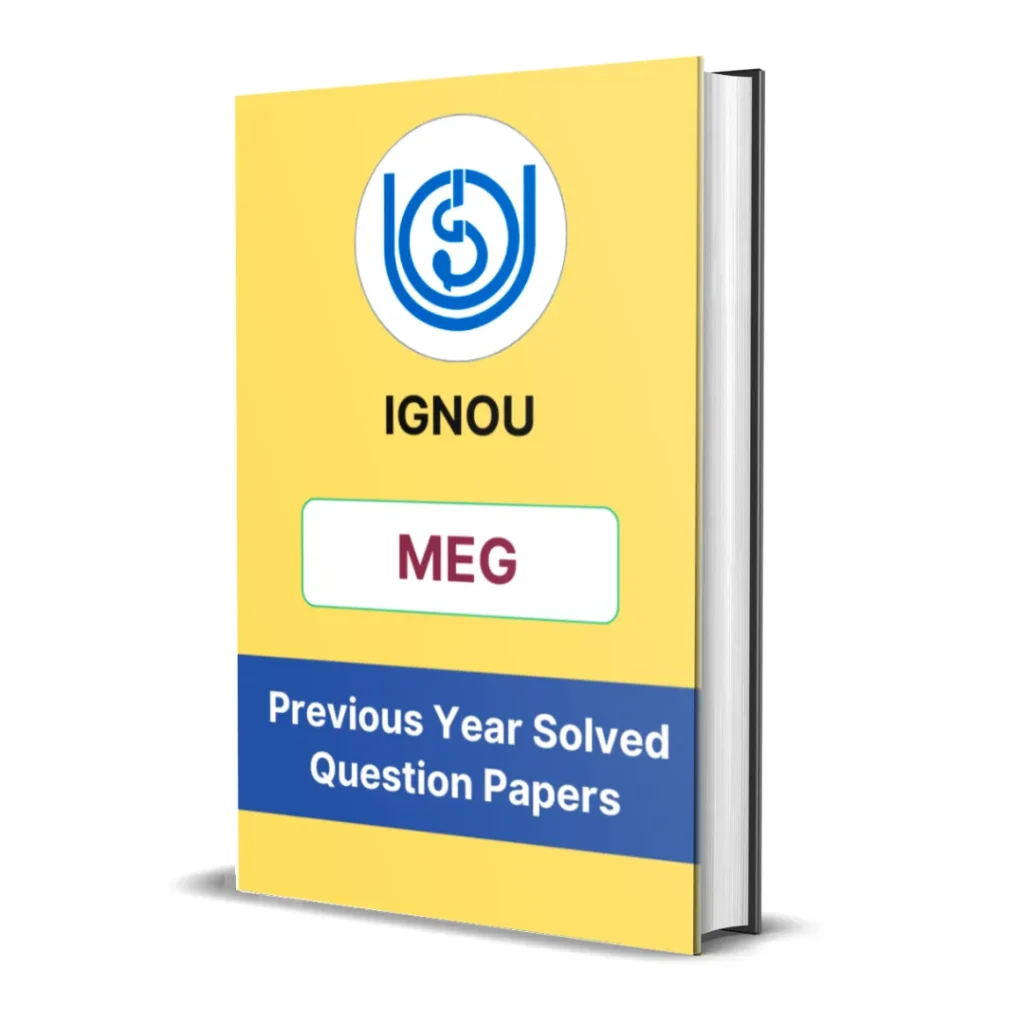IGNOU MEG-05 Block 5 Summary | Marxist View of Literature
- Last Updated On August 14, 2025
Table of Contents
Here you will get the detailed summary of IGNOU MEG 5 Block 5 – Marxist View of Literature.
We have provided the summary of all units starting from unit 1 to unit 6.

Introduction
IGNOU MEG-5 Block 5 focuses on the Marxist View of Literature, examining how literature functions within and responds to the structures of society, class, ideology, and history. Marxist criticism views literature not just as art, but as a product shaped by material conditions and socio-economic forces. This block explores foundational Marxist concepts such as base and superstructure, class struggle, ideology, and the role of literature in both reinforcing and challenging dominant social systems. It also highlights key debates within Marxist theory—particularly around issues of commitment, autonomy, and representation. By studying thinkers like Karl Marx, Friedrich Engels, Georg Lukács, Bertolt Brecht, and later cultural theorists, the block equips learners to understand literature as both a reflection of and a participant in ideological and historical processes.

Unit 1 – Marxism and Literature
This unit introduces the basic principles of Marxist theory and how they apply to literature.
Core ideas:
-
Historical Materialism: History develops through material (economic) conditions, not ideals.
-
Base and Superstructure:
-
Base: The economic foundation (means and relations of production).
-
Superstructure: Institutions like politics, religion, and literature that are shaped by and reflect the base.
-
-
Literature is seen as part of the superstructure, but it both reflects and can influence the base.
-
Emphasis on class struggle and the tension between dominant and subordinate classes.
Marxist critics analyze how literature either supports or resists dominant ideologies and how it represents class conflict and social change.

Unit 2 – Society and History: Marxist View
This unit deepens the understanding of how Marxist theory interprets history and society as shaped by class relations.
Key themes:
-
Literature must be understood in relation to its historical moment and social function.
-
The dialectical method: society changes through contradictions (e.g., between classes), leading to new social formations.
-
Marx and Engels emphasized that ideologies are not neutral—they emerge from material interests.
The unit also introduces major theorists such as:
-
Georg Lukács, who believed that literature should present a realistic, total view of society.
-
The role of the proletariat in shaping a new, classless society through revolutionary change.
In this framework, literature is historically situated—it either obscures reality through false consciousness or illuminates the true conditions of social life.
Unit 3 – Representing and Critiquing Society: Superstructures
This unit focuses on how literature represents and critiques social structures, especially through its position in the superstructure.
Key concepts:
-
The superstructure is not just a passive reflection—it has relative autonomy and can interact with the base.
-
Literature can be both ideological (reinforcing dominant norms) and critical (challenging them).
-
The role of the author and the reader are shaped by ideological systems, yet they also have the potential for resistance.
Important theorists:
-
Antonio Gramsci: Introduced the idea of hegemony, the dominance of one class’s worldview over others.
-
Althusser: Emphasized that ideological state apparatuses (like literature and education) reproduce dominant ideologies subtly.
This unit encourages readers to view literature not simply as neutral representation but as a site of ideological struggle.

Unit 4 – Commitment in Literature
This unit deals with the idea of commitment, i.e., whether literature should actively participate in political and social transformation.
Debates in Marxist aesthetics:
-
Should literature be didactic and committed to a cause (like proletarian revolution)?
-
Or should it focus on aesthetic and imaginative freedom?
Key voices:
-
Jean-Paul Sartre: Advocated for engaged literature—writers have a moral responsibility to address social issues.
-
Bertolt Brecht: Developed epic theatre to provoke critical thinking and political action in audiences.
This unit examines how committed literature can expose oppression, foster awareness, and serve as a tool for social change—while also addressing potential limitations or artistic compromises.
Unit 5 – Autonomy in Literature
This unit addresses a counter-debate in Marxist criticism: Can literature remain autonomous from social and political contexts?
Major concerns:
-
Is literature’s aesthetic value undermined by political commitment?
-
Can it maintain its own internal logic and artistic integrity, or is it always socially determined?
Key thinkers discussed include:
-
Theodor Adorno, who defended literature’s aesthetic autonomy, arguing that even when not overtly political, it can resist conformity through form and ambiguity.
-
Autonomy doesn’t mean detachment, but a complex relationship with reality—often revealing contradictions subtly.
This unit balances the earlier emphasis on commitment by exploring how form, style, and innovation themselves can be forms of resistance.

Unit 6 – Literature and Ideology
This concluding unit explores the relation between literature and ideology in more depth.
Key ideas:
-
Ideology is not merely political propaganda—it’s embedded in everyday beliefs, language, and cultural practices.
-
Literature both reflects and shapes ideological formations.
-
Louis Althusser’s theory of interpellation: Individuals are “hailed” by ideology, becoming subjects within a system of beliefs.
This unit emphasizes that:
-
No text is ideologically neutral—even narratives that seem apolitical carry assumptions about class, gender, race, etc.
-
Marxist literary criticism aims to uncover these hidden assumptions and understand literature’s role in either sustaining or challenging them.